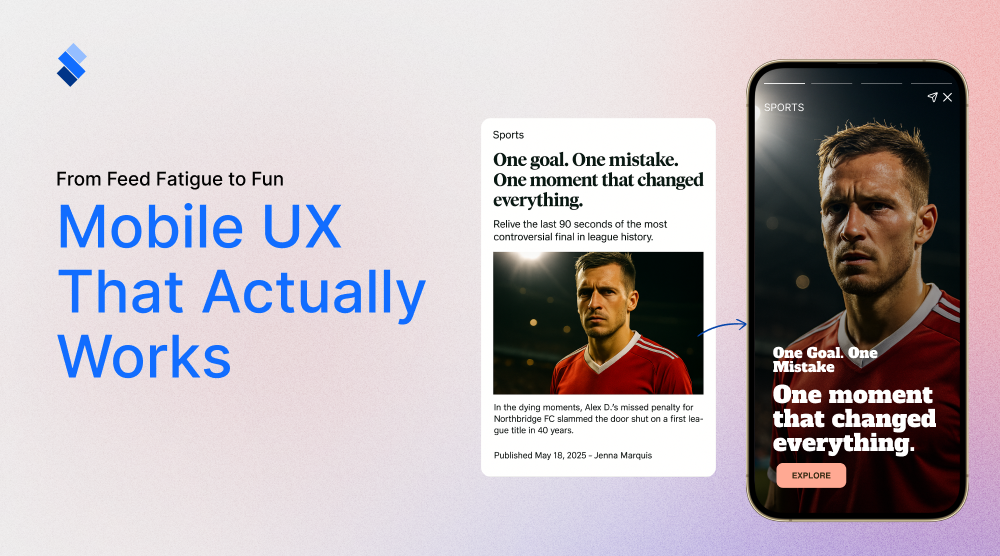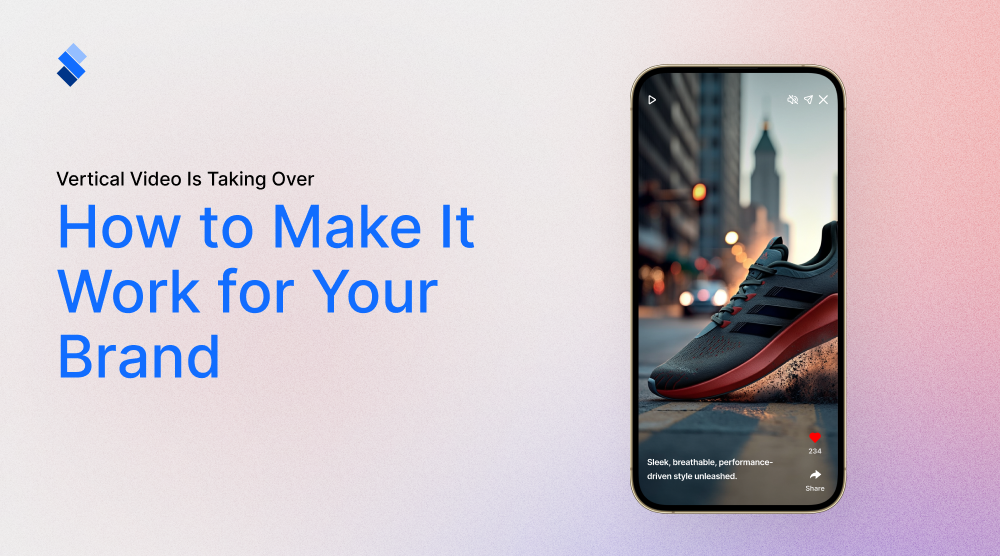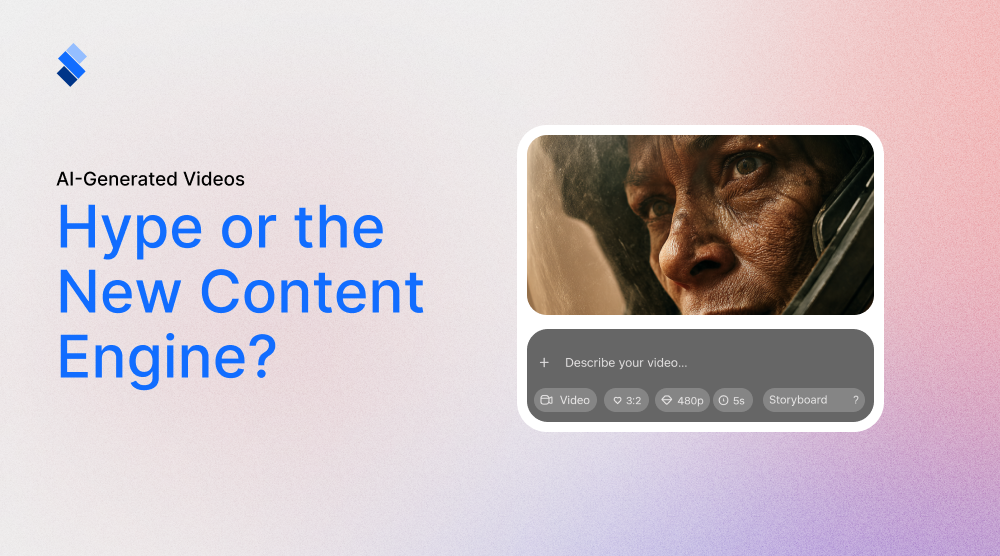The biggest content marketing trends of 2023 (so far)
In order to properly grow your brand you need to be aware of the biggest content marketing trends of 2023 and how they work.

If there is one thing that all marketing managers can attest to is that marketing is ever-evolving. Regardless of you approach it, you need to constantly learn and adapt to new industry standards and trends. Therefore it is paramount that you are up-to-date with what is going on with digital marketing in general, in order to get a good idea of which ongoing trends are likely to shape the future. So, let's use this article to look back and outline the biggest content marketing trends of 2023.
The most influential content marketing trends of 2023
Depending on what industry you are focused on, there could be various marketing trends that are more or less prevalent. But, we do feel that there are some that have left their mark in every industry. These are AI, Short videos, and Visual elements. As such, it is important that you fully understand these three trends in order to get a good idea of what modern marketing is like.
AI development
Arguably the biggest factor in modern content marketing is AI development. Ever since it started, we all had a feeling that it will leave a lasting impact. But thinking about it and seeing it happen are two different things. There are quite a few ways in which AI development has impacted content marketing as a whole.
AI content
Firstly, AI has made it possible to quickly and easily generate content. This includes written content like blog posts, articles, and even visual content like images and videos. For marketing purposes, most of the AI use still revolves around written content. But, as time goes on, we are likely to see an increase in visual content as well. As it is now, natural language processing (NLP) models like GPT-3 can produce coherent and contextually relevant text. As such, content creators can use AI-generated drafts as a starting point and then refine and personalize the content to match their brand voice and style.

Unfortunately, not all content creators use AI for this purpose. It has become quite easy to simply copy/paste the content written by AI, and not worry much about copyright. This has led to a couple of issues. Firstly, while AI may generate content that is grammatically correct, it can lack nuance, context, and creativity. This leads to less engaging and compelling content. And seeing that there are brands that don't care much about content quality, leads to a substantial oversaturation of poorly written AI content. Secondly, this overreliance on AI-generated content can lead to a loss of authenticity and the human touch in brand communication. Audiences can usually detect a lack of genuine emotion and connection in AI-generated content. This tends to have quite a negative impact on brand perception.
AI marketing plan
The second transformative impact that AI has had on the field of marketing is that it fundamentally changed the way strategies are formulated and executed. By relying on AI tools, marketers can delve deep into vast datasets. Doing so enables them to extract valuable insights that inform every aspect of their campaigns. AI's advanced analytics capabilities help identify trends, consumer behaviors, and market shifts, providing a solid foundation for strategic decision-making.
One of AI's key strengths lies in audience segmentation and personalization. Through sophisticated algorithms, AI can segment audiences based on a multitude of factors, enabling marketers to tailor their messages and content to resonate more effectively with specific groups. As we mentioned before, personalization can not only enhances engagement but also foster a deeper connection between brands and consumers. And as time goes on, it will be only more and more important to adopt personalization as a marketing norm.
Lastly, modern SEO optimization is becoming more and more reliant on AI. Marketers pretty much need to use AI-powered tools, to analyze vast amounts of data. By doing so, they can identify keywords, trends, and user behaviors, enhancing on-page and off-page SEO efforts. AI-driven content generation ensures high-quality, relevant, and engaging material that resonates with both users and search engines. Additionally, AI aids in competitor analysis, providing insights to refine SEO tactics and stay ahead. Voice search optimization is facilitated by AI's understanding of natural language, while AI-driven chatbots enhance user experience and interaction.
Short video content
While we can continue to discuss how AI has essentially shaped the modern marketing landscape, let's take a step back and consider short video content. If you are using Facebook, YouTube, Instagram, and especially TikTok you've noticed how prevalent short videos have become. If they are not the sole format hosted on platforms (TikTok) they tend to take up prime real estate. The reason why this is that, due to a multitude of factors, people simply respond best to short videos.
Attention-Grabbing
Short videos capture viewers' attention quickly, making them effective for conveying key messages or sparking interest in a short amount of time. In a fast-paced digital landscape, grabbing attention is crucial for successful marketing. Once brands get a hold of this, they can look to showcase their personality, values, and products in a visually appealing and shareable format. This can lead to increased brand awareness and recognition. If properly made, short videos can convey stories, evoke emotions, and create connections with viewers. This ability to convey narratives in brief moments is a unique strength of short videos.
Mobile consumption
Keep in mind that most modern viewers with content on their phones. While there are those that use PCs, most predominantly use mobile devices. And, as it turns out, short videos are perfectly suited for mobile consumption, as they can be easily viewed on smartphones and shared on various social media apps. Therefore, it shouldn't come as much surprise that short videos have had such a rise in popularity.
User-generated content
Brands can encourage user-generated content through challenges, contests, or interactive prompts. This can lead to increased engagement, as viewers become active participants in the brand's content creation. And seeing that users tend to use phones and that phones have cameras, what better UGC than short videos? When it comes to UGC, short videos are both easiest to create, and most interesting to view.

Viral Potential
The bite-sized nature of short videos makes them highly shareable, potentially leading to viral campaigns that reach a massive audience in a short period. The same goes for UGC, where other viewers can rewatch and share interesting videos. Brands can use this viral potential to showcase their products or services. A well-crafted video can easily demonstrate features, benefits, and value propositions that potential customers might find interesting. Similarly, short videos can convey quick tips, tutorials, or educational snippets, positioning the brand as an expert and helping viewers solve problems. As long as the content is interesting and to the point, viewers will be more than happy to see what the video is all about.
Visual elements
The last trend we will go over is the visual elements. What we mean here are the visually rich elements that content creators incorporate in various types of content. These can range from infographics that help explain complex subjects. To seemingly simple images that help give written content an emotional tone. All in all, marketers have long recognized the value of visual elements, especially if one knows how to properly incorporate them with the rest of their online presence.
The big thing about visual elements, such as images, infographics, and videos, is that they capture readers' attention and encourage them to spend more time engaging with your content. This extended engagement can lead to a deeper understanding of your message and a higher likelihood of conversion. Visual elements can also break down information into digestible components, making it easier for readers to grasp and retain key points. Well-made visual aids can clarify data, processes, and instructions, enhancing the overall readability of your content.
Guiding a narrative
Now, it is important to note that visual elements aren't solely about explanation. They can also complement your narrative, enabling you to tell a more compelling and memorable marketing story. Well-made images evoke emotions, establish context, and enhance the reader's connection to the content. This helps tremendously with brand recognition as doing so gives your brand a distinct tone. And in the modern era of brand oversaturation, having a distinct tone is invaluable.
Also, keep in mind that visuals can guide readers' attention to specific areas of your content, such as calls to action (CTAs), important statistics, or key takeaways. This strategic placement directs readers toward the information you want them to focus on.
Shareability
We, as people, tend to like well-crafted, interesting images. This is why written content with visually appealing elements is more likely to be shared on social media and other platforms. Infographics and images, for example, are highly shareable and can extend the reach of your content to a broader audience. Visual elements, when used thoughtfully, can enhance accessibility for different audiences. One shouldn't forget to use alt text, descriptive captions, and other techniques to ensure that visually impaired individuals can engage with your content. You should also note that integrating visuals diversify your content, catering to different types of learners and readers. Some people prefer visual learning, and by accommodating their preferences, you can appeal to a broader audience.

All this is why incorporating visual elements into written marketing content enhances has become one of the most powerful content marketing trends of 2023. By strategically choosing and integrating visuals, you can create a more immersive and impactful experience for your audience, ultimately driving better results for your marketing efforts.
What the future holds
When asked what the future of marketing will look like it is surprisingly difficult to give a straight answer. On the one hand, we can expect that modern trends will only further develop. AI will become more robust as it incorporates different aspects of personalization. And before long, we might even see AI-powered tools that create short videos. But, on the other hand, this is simply our assumption based on how AI has developed thus far. 15-20 years ago, the modern marketing landscape would seem like science fiction. Yet, we are living it. So, are there some key points that we can use to base our future marketing campaigns?

The future of marketing is poised for dynamic transformation, driven by technological innovations and shifting consumer expectations. Data-driven personalization will be at the forefront, leveraging advanced AI and analytics to deliver hyper-personalized experiences that resonate deeply with individual consumers. Voice and visual search will gain prominence, shaping SEO and content strategies to cater to evolving search behaviors.
Video content will continue to dominate, with immersive experiences such as augmented reality (AR) and virtual reality (VR) becoming integral to marketing campaigns. Ethical considerations surrounding data privacy and sustainability will, hopefully, guide responsible marketing practices, and brands aligning with meaningful causes will stand out. Interactive content, real-time marketing, and seamless omnichannel integration will be essential for engaging and captivating consumers in fast-paced digital environments.
Customer experience will remain a top priority, emphasizing value, convenience, and exceptional service. Collaboration with influencers and user-generated content will bolster authenticity and trust. In this ever-evolving landscape, successful marketers will be those who adapt swiftly, harness the power of emerging technologies, and prioritize authentic connections to deliver valuable, personalized experiences that resonate with diverse and discerning audiences.







